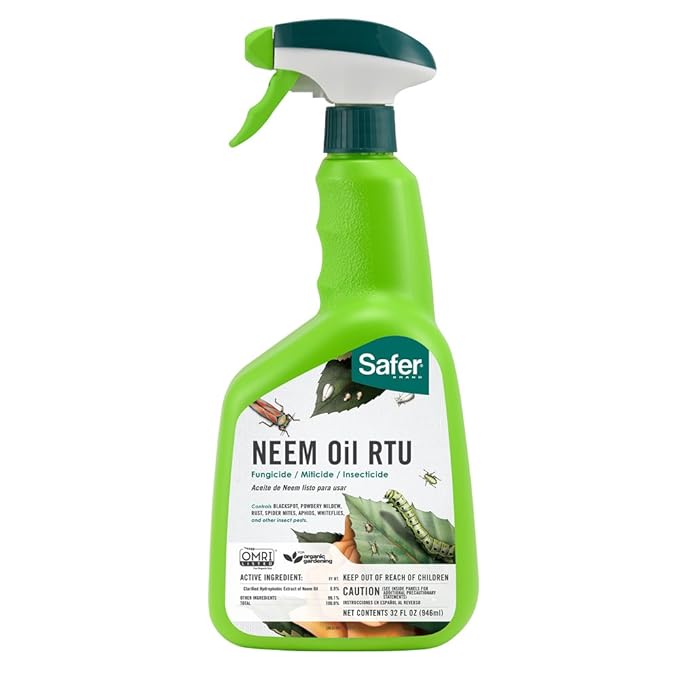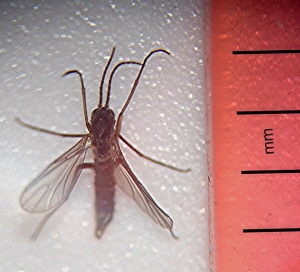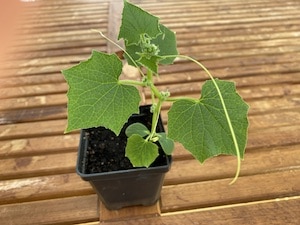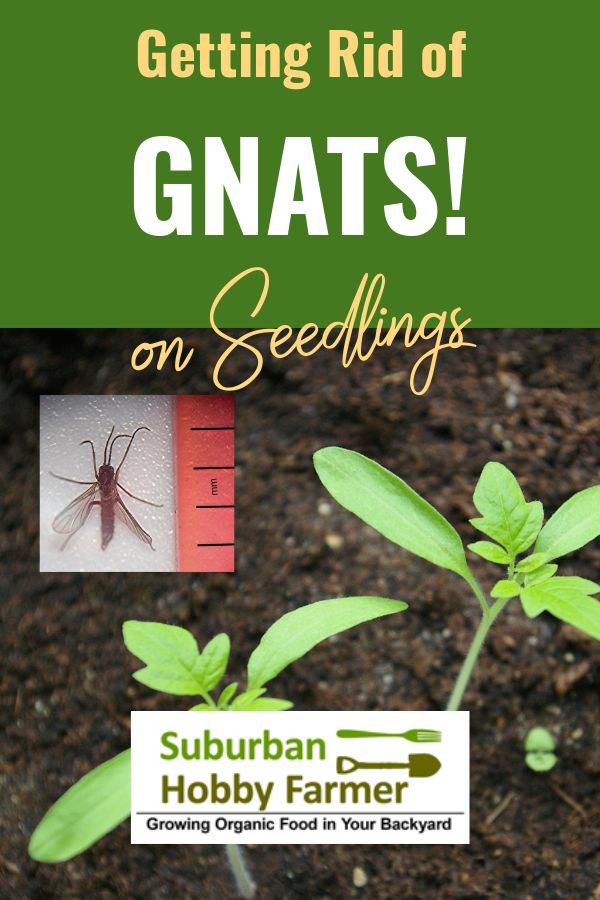Updated: January 28, 2020
You should get rid of gnats on vegetable seedlings because the fungus gnat larvae feed on plant roots. This will eventually affect the health of your vegetable seedlings.
Sorry if this sounds a little stern, but you shouldn’t wait. Do it now.
This article covers three effective methods to help you get rid of gnats on your seedlings.
Every year, fungus gnats
Every year I get some fungus gnats living on the vegetable seedlings that I start indoors in February.
How do I know they are fungus gnats? One way I know is they don’t fly or act like fruit flies.
I’m able to hand kill some of them. You could never do that with a healthy fruit fly because they are too fast.
Fortunately, there aren’t very many of them. In fact, the most I’ve seen at one time is three. And they pretty much stay to three of the many seedlings.
They wouldn’t really bother me, but unfortunately it seems that the larvae feed on small seedling roots. Of course, if you see a few flying around, you know that there are many, many more below the surface.
I know I must deal with them before they spread to my house plants because they will take up residence and take over my my home.
Table of Content
This is a long, detailed article. You can jump to where you want to be by clicking on the different sections below. To come back to this table of contents, just use the back button on your browser.
Let’s take a sec to get the legal words out of the way. This article may contain affiliate links. That means if you click and buy from my partners, I will make a tiny amount of money. This in no way affects my recommendations.
How to get rid of gnats on vegetable seedlings
There are three organic methods for eliminating or reducing the number of gnats on your seedlings. If your infestation is bad enough, you may want to use multiple methods to deal with the problem.
1. Sticky traps
Like fly paper, sticky cards trap the gnats because they land on it and are stuck. For larger infestations this method may not be effective enough.
More to the point, sticky cards don’t kill enough of them before they can lay eggs. But, in my situation, I was able to get the job done with this easy, less invasive, solution.

Here’s a video showing how to use sticky traps. The last part of the video has some good information on how to use the traps. You will want to make sure you stick with it until the end because that’s where the video covers the important points.
2. Neem oil
Neem Oil is a vegetable oil that comes from the fruits and seeds of the neem tree. It is typically used in organic farming and medicines.

To use Neem, you drench the soil or spray the solution on the above the dirt level portion of the plants. It works by repelling fungus gnats.
Related: Wasps & Pesticides
You must be careful with Neem Oil. It is an oil. If you apply it while plants are in the sun, it will burn the leaves. I suggest spraying it in the evening when it is cool. And watering well before applying. It does work but be careful.

3. Beneficial nematodes
This is the best, most thorough way to get rid of gnats on vegetable seedlings. It’s also very safe for your plants.
Fungus gnat control nematodes are microscopic worms that seek out larval stages of various flies that develop in the soil. These nematodes provide organic control for gnats, whitefly, trips and on a variety of fly larvae.

In other words, the nematodes eat the fly larvae before they become flies. This treatment is an ideal preventative measure for your seedlings.
It’s bee and beneficial insect safe.

Everything I Know About Starting Seeds
All my seed starting and seedling growing articles in one place.
Related articles that might interest you:
- Soil Blocks Vs. Paper Pots for Starting Seedlings.Which is better?
- Build an Indoor Seedling Starting Unit for Not Much Money
- Transplant Seedlings at Proper Soil Temperatures

Suburban Hobby Farmer is a participant in the Amazon Services LLC Associates Program, an affiliate advertising program designed to provide a means for sites to earn advertising fees by advertising and linking to amazon.com.